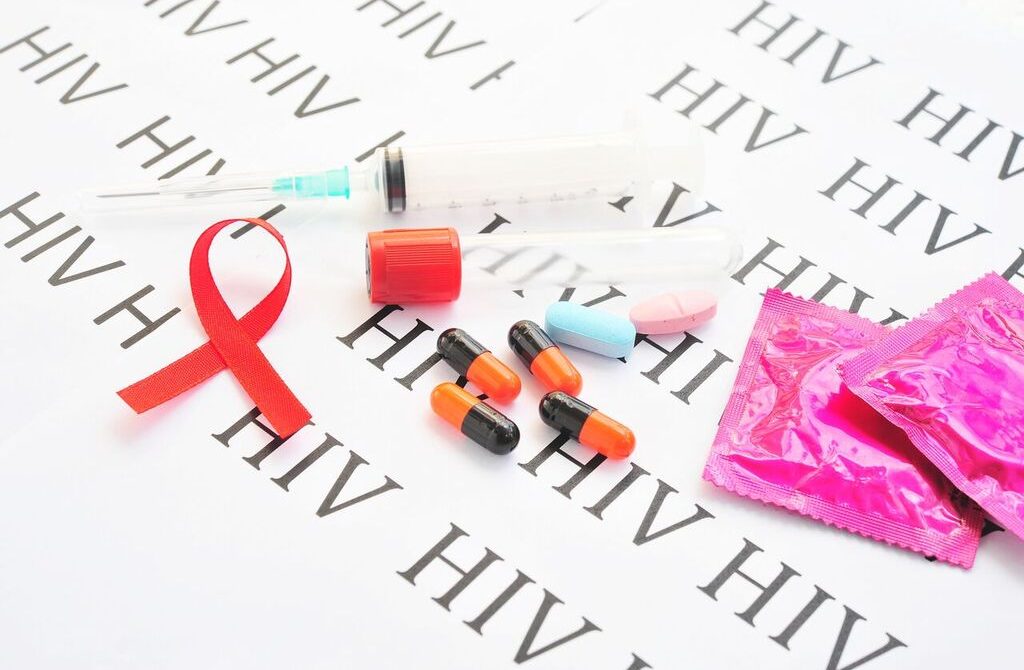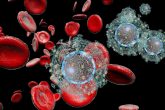
Did you know that the simple act of using a condom provides 99% protection against HIV infection, not to mention protection against other sexually transmitted infections (STIs)?
The spread of HIV from person to person is called HIV transmission.
There are three main routes in which HIV is transmitted:
- Unprotected sexual intercourse – unprotected sex means having sex without using a new latex or polyurethane condom every time. Anal sex is more risky than is vaginal sex. The risk increases if you have multiple sexual partners
- Exposure to infected body fluids or tissues – blood, semen, pre-seminal fluid vaginal fluids, rectal fluids, breast milk
- Mother to child during pregnancy, delivery, or breastfeeding (also known as vertical transmission)
Other known risk factors for HIV infection include obvious ones and some that are less so:
- Having another STI (like gonorrhea and chlamydia) can weaken your body’s natural protection and increase your chances of becoming infected with HIV if you’re exposed to the virus.
- Using intravenous drugs – People who use intravenous drugs often share needles and syringes. This exposes them to droplets of other people’s blood.
- Not being circumcised – Studies indicate that lack of circumcision increases the risk of heterosexual transmission of HIV.
- Using tattooing and body piercing equipment – including the ink – that isn’t sterilized or properly cleaned and is infected with HIV
In Africa, the 3 main routes of transmission are:
- Heterosexual sex (between a man and woman)
- Blood transfusions
- Mother to child transmission
Youth and young adults in Africa are particularly vulnerable to HIV, with young women at higher risk than young men.
There are many factors that contribute to the spread of HIV, including prostitution, high-risk practices among migrant workers, high prevalence of sexually transmitted infections (STI) clandestine high-risk heterosexual/homosexual practices, international trafficking of women, and irregular screening of blood transfusion products.
Many people who have HIV don’t even know it because they don’t show any symptoms for years. Even though there aren’t any symptoms, HIV can still be passed on to someone else.
There are three main stages of HIV infection:
- Acute infection – flu-like symptoms that may come and go for a month or two after initial infection
- Clinical latency – This is a prolonged period without a symptom after the acute phase is over. During this stage, HIV continues to multiply but at very low levels.
- AIDS – The late symptoms of HIV infection are referred to as AIDS and generally don’t appear for many years. As the infection progresses, it interferes more and more with the immune system, making the person much more susceptible to common infections like tuberculosis, as well as opportunistic infections (pneumocystis pneumonia) and cancers (Kaposi sarcoma) that do not usually affect people with healthy immune systems.
How can we prevent HIV/AIDS?
HIV testing and counselling (HTC) services are important components of any HIV prevention program. HTC services have helped millions of people learn their HIV status and for those who test positive, learn about the options for treatment, care and support.
Individuals with HIV who are aware of their status are also less likely to transmit HIV to others.
In order to halt the devastating advance of the HIV/AIDS epidemic on the African continent, prevention efforts must re-double and focus on the following areas:
- Prevent sexual transmission –
- Use of condoms provides 99% protection against HIV infection
- Limit the number of sexual partners
- Cultural changes are needed including a re-emphasis on fidelity within marriage and sexual abstinence outside of it
- Prevent Mother to Child transmission – every HIV positive pregnant woman should be treated with antiretroviral therapy.
- Provide safe blood supply for transfusions
- Avoid intravenous drug abuse
- HIV/AIDS health education
There are many myths surrounding HIV/AIDS that negatively impact care seeking, delaying diagnosis and proper treatment. Let’s debunk some of them now.
MYTH: Taking certain vitamins and supplements can cure AIDS
FACT: There is no known cure for HIV/AIDS. While taking vitamin supplements prescribed by your doctor, along with eating healthily, exercising, not smoking and drinking in moderation can help keep one healthier for longer, large doses of vitamins or immune boosters can actually do more harm than good.
MYTH: You can test negative once you’ve tested HIV-positive
FACT: Wrong again. Successful antiretroviral treatment, such as Highly Active Antiretroviral Therapy (HAART), can cause the amount of HIV in the blood to be so low that viral load tests can’t detect it. This does not mean, however, that the person is now HIV-negative.
MYTH: Mosquitoes Can Transmit HIV/AIDS
FACT: While mosquitoes can spread serious diseases like malaria and yellow fever, they can’t transmit HIV or AIDS. Humans can’t get HIV/AIDS from any insects or animals, because only humans can carry the virus.
MYTH: Condoms don’t work; HIV can pass through the latex
FACT: If used correctly for every sexual encounter, condoms are almost 99% effective. The other 1% is caused by human error. For example, if one doesn’t use a condom all the time or if the condom breaks (which happens if used incorrectly). Latex blocks HIV and sperm, preventing pregnancy and other sexually transmitted infections as well.
MYTH: Having sex with a virgin cures AIDS
FACT: Again, there is NO CURE for AIDS. There is no truth to this at all.
MYTH: MY partner and I are both HIV-positive, so we don’t have to use condoms
FACT: If you’re positive and sexually active, you MUST always use a condom to protect yourself and your partner from repeat infections which could hasten the onset of AIDS.
Join us on The HealthZone today for an in-depth discussion on HIV/AIDS


